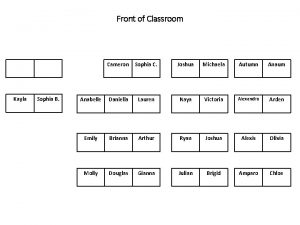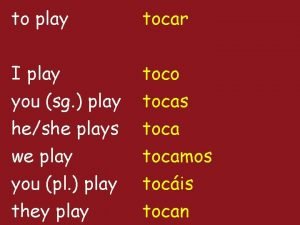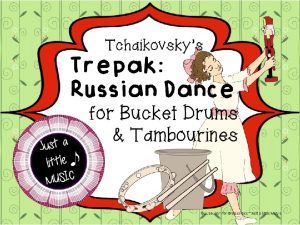SOPHIA TOWN SOUTH AFRICAN PLAY HISTORY OF SOPHIATOWN














- Slides: 14

SOPHIA TOWN SOUTH AFRICAN PLAY

HISTORY OF SOPHIATOWN • On 9 February 1955, the head of the South African state, D F Malan, sent two thousand policemen armed with sten guns and rifles. • They destroyed Sophiatown and removed 60 000 inhabitants. • The removal of the residents of Sophiatown was organised by the Native Resettlement Board, which was the NP’s local board. • People who settled in Sophiatown were moved to Meadowlands, which formed a part of Soweto, where the NP established a housing area based on the population census within the shanty town. • The houses had no toilets, water and electricity.

“The bulldozers were just hired killers; they flattened people’s homes in minutes. They destroyed a spirit, a culture, and a rich heritage that had been built up over generations. But they could not remove people’s dignity or their memories. The story of forced removals will be told for many generations to come. The pain cannot be ignored. ” -Don Mattera, poet and author

WHAT IS A PLOT • The term “plot” refers to how the main events in the book or play relate to one another, how one event leads to another. Something happens because of something else, and so on. It is a series of events that make up a story and is specific to each story. A plot structure, also called a dramatic structure is the overall design or structure of a story and how the story elements are arranged. • To help you analyse the plot, it is important to understand what the structural elements of the plot are. • Every story has a beginning or exposition, with something that leads to conflict in the middle, before it is resolved and the story

TO HELP YOU UNDERSTAND THE PLOT STRUCTURE, HERE IS A GRAPH THAT ILLUSTRATES THE STRUCTURAL ELEMENTS OF SOPHIATOWN

The exposition is the explanation (usually at Exposition the beginning of a story) of the events leading up to the start of the plot. Inciting incident The first time we realise that all is not well. Something that sets off the conflict in the story. Rising action The building up of conflict in the plot. Conflict The struggle between characters, or between individuals and their circumstances. Climax The highest point in the development of the conflict, the moment of greatest intensity and tension. Final solution The final part of the story where everything is (dénoueme made clear. nt) Conclusion The way the story is rounded off. NOW LET US LOOK AT THE DEFINITIONS OF EACH ELEMENT TO UNDERSTAND WHAT THEY MEAN.

EXPOSITION AND INCITING INCIDENT OF CONFLICT Jakes sets the scene, describing the situation and conflict that the characters in the play are facing, that is, the forced removal from their homes. The incident that triggers the conflict between the characters is the arrival of Ruth. We see the first reactions of the other characters towards her. In terms of the story and plot, Ruth’s arrival sets in motion the struggle that the characters face. This struggle will remove them from the home and lives they know

• In the play, Sophiatown, two distinct types of conflict can be identified, namely: • 1. Conflict between characters, for example between Mingus and Ruth, or Fahfee and Jakes, or Ruth and Jakes. • 2. Conflict between the characters and a situation, for example, the characters in the play face conflict in terms of the forced removals. We can also say that, in this play, the conflict is between the residents of Sophiatown and the apartheid government. CONFLICT BEGINS

RISING ACTION CONTRIBUTING TO CONFLICT AND LEADING TO CLIMAX • What builds up to the conflict between the main characters is how they, for example Jakes, Mingus and Fahfee, react to Ruth also reacts to them and to life in Sophiatown. • The conflict between the characters and their situation also contributes to the rising action. There are glimpses of resistance to the coming eviction through Fahfee. As the play proceeds and the time of the eviction draws closer, the tension rises.

CLIMAX • Act 2, Scene 5 and 6. The first evictions in Sophiatown are shown. The bulldozers have arrived to demolish Toby Street. It is clear the bulldozers will soon come to Gerty Street.

• The police and bulldozers are about to arrive to demolish the house in Gerty Street. The characters are powerless to stop their eviction. Plans to resist this have failed. FALLING ACTION/ FINAL SOLUTION

CONCLUSION • In the last scene, the characters (except for Ruth, Princess and Charlie) remember the day their home was destroyed and they tell about this day from their point of view. Jakes tells us what happened to Ruth, Princess and Charlie. The song at the end conveys a mood of sadness and mourning for what was lost

CAST • JAKES: Drum magazine journalist, smart and in his late 20’s • MINGUS: American gang member, in his late 20’s • MR FAHFEE: Fahfee runner and Congress activist, in his late 40’s • LULU: 16 year old girl • MAMARITI: A shebeen Queen and owner of a house in Sophiatown; the mother of Mingus and Lulu • PRINCESS: Lover of Mingus and good-time girl, in her 20’s • RUTH: Jewish girl from the white suburb of Yeoville, in her 20’s • CHARLIE: Mingus’s sidekick, he is barely articulate (able to read or write or speak clearly) and is obsessed with shoes

SETTING • Set in 1960’s • Mamariti’s freehold Sophiatown house • Living area is cramped (small) but comfortable suggesting care/warmth • Each character has their own corner filled with their things • JAKES: has a table, chair, typewriter and books • CHARLIE’S: has a broken car seat and steering wheel • LULU: has school books, pens and pencils • MAMARITI’S: has a comfortable arm chair and side-table covered in photographs • There are chairs in the kitchen
 Town b is 380 km due south of town a
Town b is 380 km due south of town a Sophiatown memorandum
Sophiatown memorandum Fill in the gaps using the right preposition of time
Fill in the gaps using the right preposition of time Dr hamilton surgeon
Dr hamilton surgeon Saaqis
Saaqis South african furniture initiative
South african furniture initiative South african journal of botany impact factor 2020
South african journal of botany impact factor 2020 National archives and records service
National archives and records service Apartheid
Apartheid South african bont tick
South african bont tick South african tax
South african tax Sacap architectural compliance certificate
Sacap architectural compliance certificate South african freedom charter pdf
South african freedom charter pdf South african tax
South african tax Kapske gore
Kapske gore



























